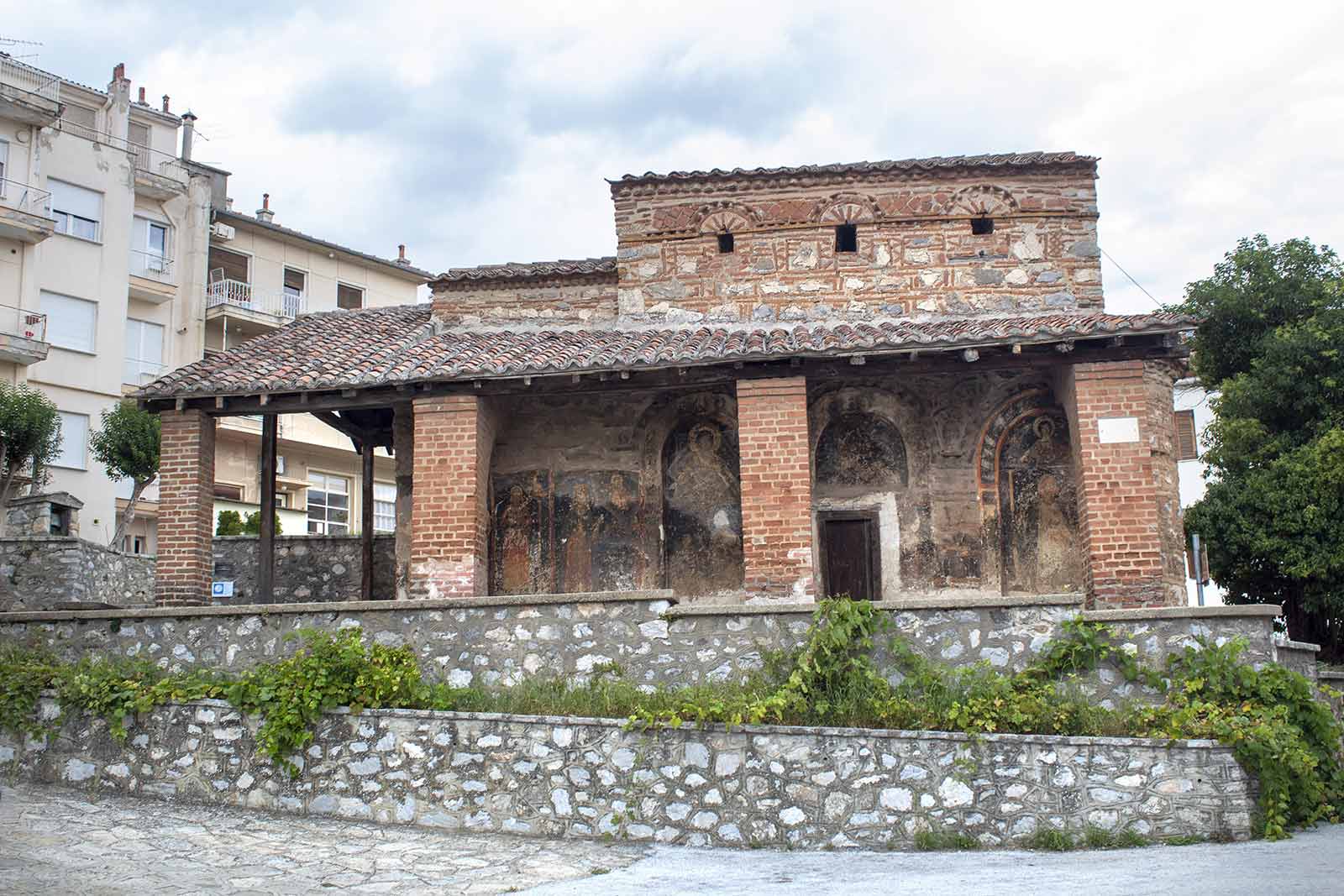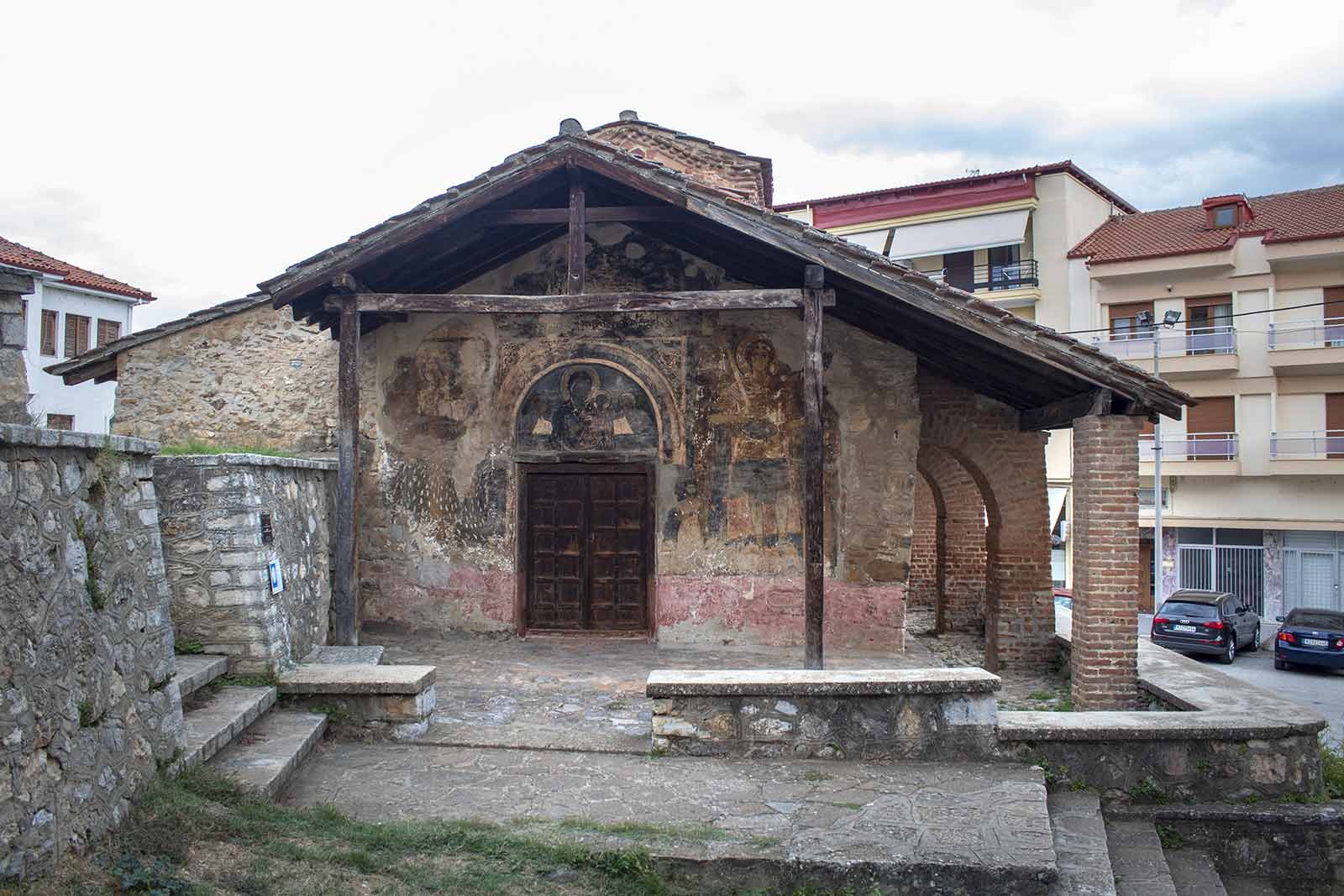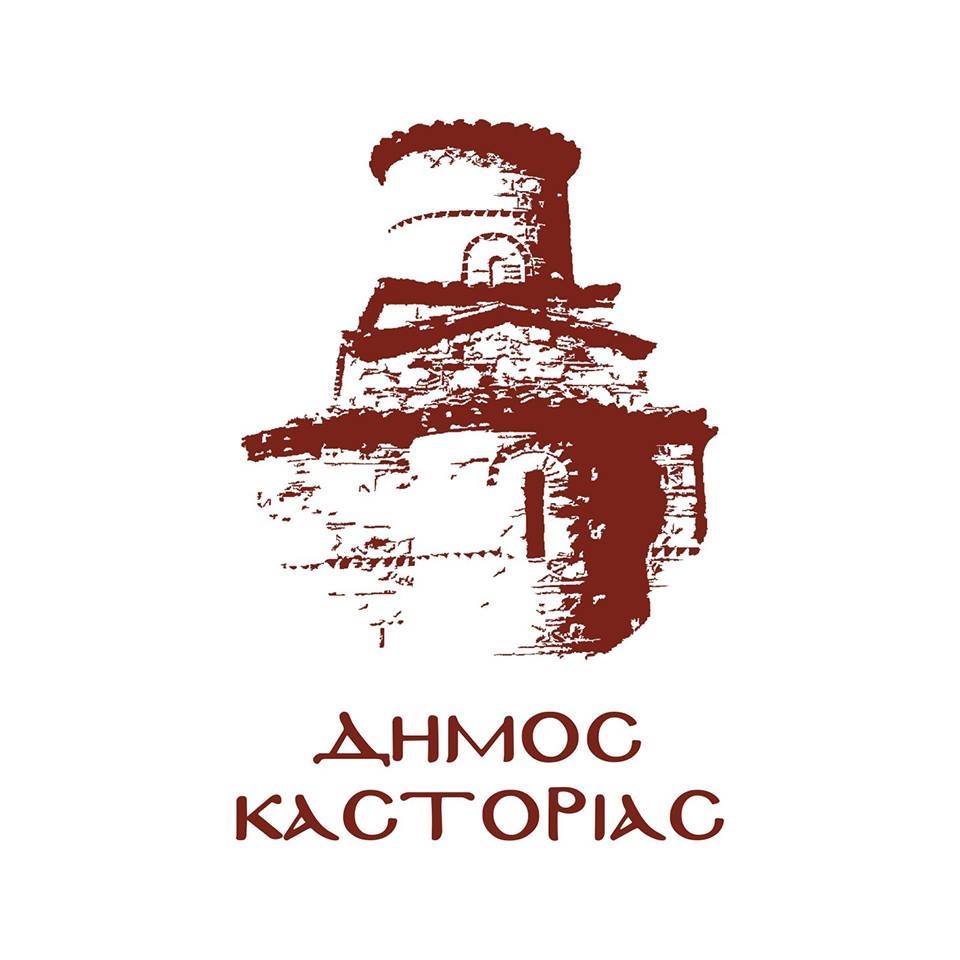Church of the Taxiarches of the Metropolis
The Taxiarchis is located within the Byzantine walls, an urban cell of Kastoria, near the Metropolis, a building of the era of the last Turkish occupation, from which it received, in a relatively recent era, the name Taxiarchis of the Metropolis. The church, is a small three-naved, vaulted, basilica with a narthex. Because of its minimal dimensions, it gives the impression, from the outside, of a miniature early Christian timber-framed basilica.
Pelecanides, based on the sculpted architectural parts that he observed in second use in the temple of Taxiarchis (columns, bases and “suffixes” of amphikions – ionic rhythm columns), assumes that the temple was built on an early Christian basilica. In 1356/60, during the general repair and repainting of the main floor of the church, the old wooden tractors of the arches were cut off and replaced with new ones. From certain structural indications, such as the difference in the masonry and the interruption of the succession of relief niches, in the outer meridian wall, we can see that the narthex is an addition, slightly later, than the time of the erection of the original church. The interior decoration of the monument with frescoes was done in two stages. The first layer of frescoes, which is contemporary with the building of the monument (10th century), can be seen in the niches of the north and south naves and on the walls of the narthex. The second layer of frescoes occupies the walls of the main nave and dates from 1359, according to the inscription above the entrance to the church. Inside, the icons of the Virgin Mary praying in the niche of the sanctuary and the Assumption of the Virgin above the entrance to the main nave stand out, one of the best in terms of art and rendering.
In the church there is a tomb where the remains of the Macedonian freedom fighter Pavlos Mela and his wife Natalia ended up after many adventures. Pavlos Melas lost his life in the wider area of Mount Verno and near the village of Statista. His comrades were forced to abandon his lifeless body and move away from the area. The news of his death was published a few days later in the Athenian Press, where the Ottoman authorities were informed of the existence of the lifeless body of a Greek officer and searched for it in order to protest to the Great Powers about the support of rebel corps by the Greek government. V. Dinas re-enters the settlement, finds the skeleton of Pavlos Melas, tries to bury it but fails and removes his head in order not to be recognized by the Ottoman authorities who are looking for it. A few days later, Pavlos Mela’s head is buried with a funeral inside a church in Pisoderi, while his body is initially buried near the settlement and then, after the actions of the Metropolitan of Kastoria, Germanos Karavangelis, in the courtyard of the church of the Pammegiston Taxiarches in Kastoria, where today is the grave of Pavlos Mela and his wife Natalia.

















